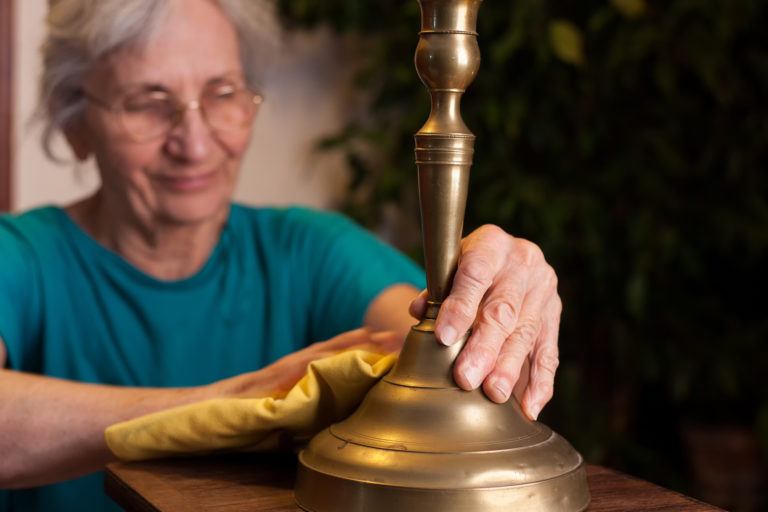
Quick Tips
You know that feeling when you inherit a beautiful brass lamp from your grandmother, only to realize it looks like it’s been stored in a haunted attic for the last 50 years? Or maybe you bought an antique brass trinket at a flea market, thinking it would add character to your home—until you noticed it had more tarnish than actual brass. If you’ve ever stared at a dull, grimy piece of brass and wondered if it could ever shine again, you’re in the right place.
Brass is gorgeous when it’s clean, but it has an unfortunate tendency to tarnish over time. That greenish-black gunk? It’s oxidation—basically brass’s way of telling you it needs some love. The good news is that with a little effort, you can restore your brass to its original luster. Here’s how.
What You’ll Need to Clean Brass
Before you begin, grab the following supplies:
- Lemon juice or white vinegar – Natural acids help break down tarnish.
- Baking soda or salt – Adds abrasiveness for scrubbing.
- Soft cloths or microfiber towels – To avoid scratching the brass.
- Toothbrush or soft-bristle brush – For detailed areas.
- Mild dish soap – For general cleaning.
- Brass polish (optional) – For extra shine and long-term protection.
- Gloves (optional but recommended) – Keeps your hands clean and prevents fingerprints.
How to Clean Brass in 6 Easy Steps
1. Determine if Your Brass is Solid or Plated
Before you start scrubbing, check if your brass is solid or just brass-plated. Use a magnet—if it sticks, your item is plated, not solid brass. Be gentle with brass-plated items, as excessive scrubbing can remove the thin brass layer.
2. Wash with Soap and Water
For lightly soiled brass, mix warm water with mild dish soap and wipe down the surface with a soft cloth. This removes dirt and grease without harming the brass.
3. Make a Natural Cleaning Paste
For tarnished brass, create a cleaning paste using:
- Lemon juice and baking soda, or
- White vinegar and salt
Mix until it forms a thick paste, then apply it to the brass, letting it sit for 5-10 minutes.
4. Scrub Gently
Use a soft cloth or toothbrush to gently scrub the brass in circular motions. For intricate details, use a soft-bristled brush. Avoid using harsh abrasives, as they can scratch the surface.
5. Rinse and Dry Thoroughly
Once the tarnish is gone, rinse the brass with warm water and dry it immediately with a clean cloth. Leaving it wet can lead to new oxidation.
6. Polish for Extra Shine
If you want a high-gloss finish, apply a commercial brass polish or a small amount of olive oil. Buff with a clean microfiber cloth for that extra gleam.
How Professionals Clean Brass
Restoration experts use specialized techniques, including:
- Ultrasonic cleaning – Vibrations loosen grime and tarnish without scrubbing.
- Specialty metal polishes – Designed to protect brass while restoring its shine.
- Protective coatings – Some professionals apply lacquer to prevent future tarnishing.
If you have a valuable or antique brass item, consider consulting a professional to avoid damage.
How Often Should You Clean Brass?
- Weekly – Light dusting to prevent grime buildup.
- Monthly – Quick soap and water wash to keep brass looking fresh.
- Seasonally – Deep cleaning and polishing for long-term maintenance.
Final Thoughts
Cleaning brass isn’t just about making it look pretty—it’s about preserving a piece of history. Whether it’s an heirloom, a flea market find, or just a decorative piece that got a little too dull, regular cleaning will keep your brass looking brilliant.
So go ahead, give that tarnished brass a makeover. Your grandmother (and your inner perfectionist) will thank you.